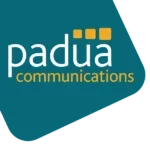There is an ongoing conversation among marketers and content specialists about whether it is better for content to be long or short. Some opt for punchy, quick reads, designed to get a simple idea over to the audience and give them something to remember. Others prefer longer, more in-depth content that gives readers something to think about.
In both cases, the point is to connect with your reader and drive an action. And although that sounds simple enough, there are several variables that influence the way you communicate with your target audience.
That’s why the best content planning is strategic, measurable and a key part of your overall marketing strategy. Quite often, a mix of short and long form content is required. You need to understand your buyer and where they are in their buying journey. Marketing drives content planning, and understanding who you are trying to reach is fundamental. But before we go into this, let’s define exactly what we mean by long form and short form content.
Short form content
Short form content tends to be something under around 1,000 words. This might include:
- Social media posts
- News articles
- Press releases
- Emails
- Blog posts
- Short video content, including stories and reels
The point of short form content is to share a simple message with your audience. It should be easily digestible, with a clear central message and call to action.
Long form content
This is for content that covers a subject in much more depth. It is designed to give readers the detail they are looking for across your chosen subject, adding real value. It educates, demonstrates capability and showcases expertise. This type of content includes:
- Blogs over 1,200 words
- Thought leadership pieces
- White papers
- Guides and tutorials
- Case studies
- Podcasts
- Longer video content
Long form content is also popular for organisations focusing on organic SEO success, where in-depth ‘pillar pages’ give readers lots of useful information while also using target keywords to improve search result rankings.
Using content to your advantage
You are probably already starting to see how both types of content have a place in your strategy. For example, social media posts and videos are great way to get in front of your audience in LinkedIn or Twitter. A thought leadership piece can help to establish your credentials and expertise, giving you more credibility with your customers as they consider where to buy.
If you want to increase the number of people who read your in-depth case studies, why not have a 30-second snippet of your client talking about their project? That gives people a reason to go and check out your work in more detail.
Knowing your audience
In nearly every blog we write, we talk about the importance of knowing your audience, and planning your content is no different. You can’t prepare the best content if you don’t know who you’re talking to. The next step after understanding your audience is getting to know their buying journey. Once you have a handle on how prospective customers are researching, understanding and committing to buying, you are much better placed to see which types of content will work for them at each stage of that journey and which channels they are using.
That is why we always start a marketing strategy with questions about who you are selling to. It helps us to see where and how those people are going to start to see your content, and how we can give them the best possible experience across the board.
How long should your content be?
This is a question we are often asked, and there is really no straight answer. It needs to be the right length to achieve the objective for that piece of content. A press release announcing a new staff member might only be 200-300 words, but that’s enough to set out your credentials.
On the other hand, content that demonstrates your expertise or is designed to be valuable to the reader could be several thousand words long. Perhaps you want to produce a market research report or write a guide to the technology behind your product. Perhaps you want to contribute an opinion piece to a trade magazine or make a detailed how-to video helping customers assemble your product. These will be longer, more detailed pieces of content that serve a particular purpose.
Content length and budgets
Long form content is much more time-consuming and costly to put together. There will be research to do, copywriting to manage, perhaps even tables and diagrams to construct. There is no point producing long form content that is repetitive or badly written. It will likely have the opposite effect from the one you desire.
Long form content needs investment, but it usually drives excellent results. Potential customers who feel that you have shared your expertise, answered their questions, been clear about benefits and understand their journey, are more likely to buy from you. That investment will have a good, measurable return.
If your content budget is tight, you can invest in a couple of great quality long form pieces and then reuse that content in lots of different ways. You can create several social media posts, write a summary blog, create an FAQ list, pull out quotes for impactful reels, add a teaser to your next email newsletter, use the content as part of an email campaign, or build an infographic.
This gives you much more value for your content, enabling you to focus on topics that are most important to your audience, and target that audience at different points of their buying journey with the information they need to hear.
Content strategy from Padua Communications
At Padua Communications, we support businesses to design and execute strategic marketing plans that get measurable results. Part of our expertise is in planning and producing content that reaches the right audience at the right time, helping them to understand what you offer, and choose you at the point of sale.
To find out more, just give us a call today on 0203 282 7570 or email us at [email protected].
Free marketing & PR resources
Sign up we’ll send you our free marketing and communications newsletter packed with helpful advice, along with details of our events.










